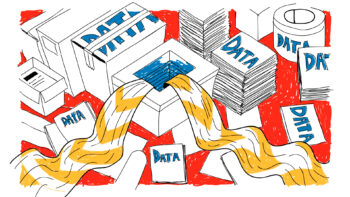Public administration is increasingly feeling the pressure of digitalisation. Citizens who use intuitive banking applications, e-commerce services or streaming platforms on a daily basis expect a similar level of convenience and quality from the state.
Cloud computing appears to be the obvious solution here – a dynamic, scalable and flexible tool that allows institutions to innovate faster. The problem is that administrative realities rarely keep up with the possibilities of technology.
Implementing cloud services in the public sector is not just a technological issue. It is first and foremost an organisational and legal transformation that determines whether the potential of the cloud will be realised or whether it will be stuck in a maze of procedures.
The gap between technology and procedure
The dynamic development of the cloud means that its implementation offers administrations a chance to leapfrog efficiency. In theory – because in practice, public procurement is still designed according to the logic of building physical infrastructure: server rooms, cables, local systems.
Meanwhile, the cloud requires a completely different approach – the ability to buy a service rather than hardware. This means flexible contracts, a different billing and accountability model. Unfortunately, many IT units in government operate in structures inherited from the era of local data centres.
Their resources are limited and the competences of the staff are mainly aimed at maintaining older systems.
The result? An ever-widening gap between what technology enables and what the administrative system is able to effectively contract and implement.
The cloud as an opportunity for systemic change
Why is this so important? Because cloud deployment in the public sector is not about savings or migrating data to another infrastructure. It is the foundation for modernising the state.
The cloud allows public institutions to respond more quickly to citizens’ needs, test new solutions and even integrate further technologies – from artificial intelligence to predictive analytics – without having to build everything from scratch.
In short: an administration that can use the cloud can become more agile, transparent and accessible.
But for this to happen, a change in thinking is needed – from procedures focused on equipment and price, to an approach that focuses on quality of service, safety and long-term value.
Why classic tender criteria don’t work
In the private sector, cloud deployment is often a strategic decision – a provider is chosen, terms and conditions are negotiated, added value is assessed. In the public sector, there are rigid tendering procedures. The problem is that these were designed for traditional infrastructure projects.
Price still dominates as the main criterion. In the case of cloud services, this can lead to a paradox: the cheapest solution wins, but it is not necessarily secure, scalable or compliant with regulations. And if we add to this the lack of competence in IT units, which are then supposed to supervise such a contract, the result is frustration on the part of both the administration and the providers.
It is therefore necessary to re-evaluate the logic of tenders: rewarding flexibility, compliance with standards, interoperability and quality of service. Price should be one element, but not the only criterion.
Five key conditions for successful contracting of cloud services
To break the deadlock and make the public sector realistically benefit from the potential of the cloud, a systemic approach is required. Five elements are key here:
1 Purpose definition – the subject matter of the contract must be described functionally, in an open and flexible way. This avoids the institution being tied to a particular technology or solution that will quickly become obsolete.
2 Selection procedure – not all cloud services can be fitted into classic procurement procedures. The choice of path has a huge impact on the feasibility of implementation and subsequent flexible operation.
3 Technical and legal requirements – interoperability, security, compliance with standards (e.g. data protection) are fundamental. These are not details, but criteria that determine the effectiveness and security of the entire implementation.
4 Bid evaluation criteria – price should not be the main factor. More weight should be given to auditability, quality, scalability and the provider’s ability to ensure continuity of service.
5 Management and monitoring – signing a contract is only the beginning. SLAs, incident management procedures, technical oversight and a competent contract manager are crucial. Without these, even the cheapest service quickly becomes a costly problem.
Lessons for the public sector and IT suppliers
The introduction of these rules is not a cosmetic change, but a necessity. For the administration, it means a chance to really modernise and provide services at the level that citizens expect. For the IT market, a change in the balance of power.
Technology companies that prioritise quality, security and the ability to handle complex contracts can gain an advantage over suppliers who only play with price.
What’s more, flexible cloud contracting can open up space for innovative startups that would have no chance to compete in the classic tender model.
In short: an administration that learns to use modern procurement tools can become not a brake but a catalyst for innovation across the ecosystem.
The cloud in the public sector is not a technological fad, but a condition for modernising the state.
However, the success of implementations does not depend on the providers themselves, but on the ability of governments to contract services in a way that is consistent with their nature – flexible, qualitative and focused on long-term outcomes.
In other words: the future of digital administration starts not in the server room, but in the tendering process.












